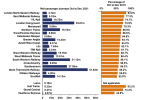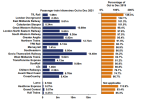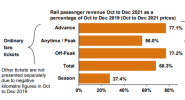Nicholas Lewis
Established Member
ORR released Q3 rail usage stats yesterday.
Some headlines LNER doing the best on journeys made compared to two years ago ScotRail worst.

Train km run was looking reasonable this qtr although of course we know that since Omicron appeared train km have been cut again so current qtr is bound to see a reduction again.

The most telling statistic is on revenue with season tickets still only achieving 27.4% of pre covid

Some headlines LNER doing the best on journeys made compared to two years ago ScotRail worst.

Train km run was looking reasonable this qtr although of course we know that since Omicron appeared train km have been cut again so current qtr is bound to see a reduction again.

The most telling statistic is on revenue with season tickets still only achieving 27.4% of pre covid

Last edited:
